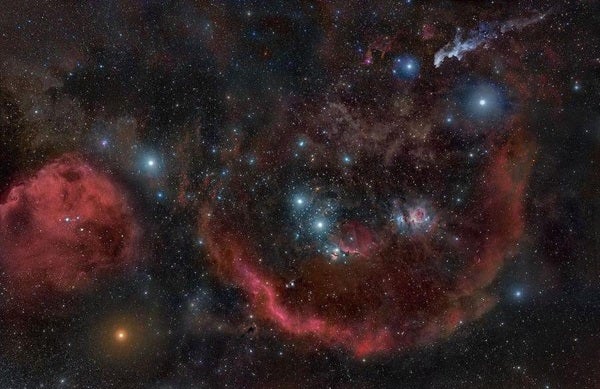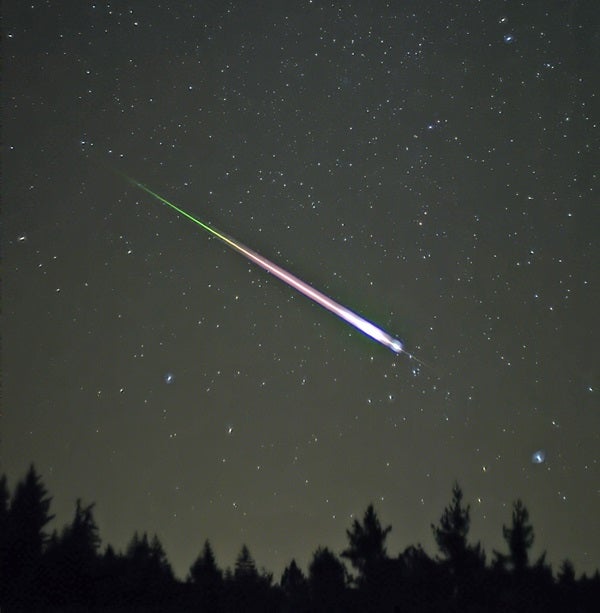A lone bright star now hangs low in the south at midevening. First-magnitude Fomalhaut — often called “the Solitary One” — belongs to the constellation Piscis Austrinus the Southern Fish. From mid-northern latitudes, it climbs 20° above the horizon at its best. How solitary is Fomalhaut? The nearest 1st-magnitude star to it, Achernar at the southern end of Eridanus the River, lies some 40° away. It doesn’t appear quite as isolated as normal these November evenings, however, because brilliant Mars hangs about 20° to its northwest.
Saturday, November 3
Asteroid 3 Juno puts on a grand performance in November. It reaches opposition and best visibility at midmonth, when it will shine brighter than it has since October 1983. But conditions this week are nearly as good. It currently shines at magnitude 7.5, just 0.1 magnitude short of its opposition peak. That’s bright enough to see with binoculars under a reasonably dark sky and a cinch to locate through a telescope from a suburban backyard. You can find Juno floating against the relatively faint background stars of northern Eridanus the River. This evening, it lies 0.3° east-northeast of 5th-magnitude 35 Eridani. Tomorrow night, it appears 0.1° southeast of this star and the same distance northwest of a dimmer star. The three objects will form a straight line that changes noticeably in less than an hour.
Sunday, November 4
For those areas of the United States and Canada that observe daylight saving time, set your clocks back 1 hour this morning. The official switch occurs at 2 a.m. local daylight time, which becomes 1 a.m. local standard time. The switch means sunrise and sunset both arrive an hour earlier today than they did yesterday. So, at least by clock time, the latest sunrise of the year occurred yesterday morning.
As if the earlier sunsets this week don’t put you in mind of winter, the midevening appearance of the season’s most conspicuous constellation surely will. Orion the Hunter rises in the eastern sky around 9 p.m. local time and appears nearly halfway to the zenith in the southeast by midnight. Look for three 2nd-magnitude stars in a line that form the Hunter’s belt. The constellation’s brightest stars are ruddy Betelgeuse and blue-white Rigel.
Mars continues to put on a great show these November evenings. The Red Planet appears 35° above the southern horizon once darkness falls. The world shines at magnitude –0.5 against the faint backdrop of Capricornus the Sea Goat. This evening, Mars slides 0.6° north of the constellation’s brightest star, magnitude 2.8 Delta (δ) Capricorni. A telescope reveals the planet’s 11″-diameter disk and several subtle surface features.
Tuesday, November 6
Mercury reaches greatest eastern elongation today and climbs highest in the southwestern sky after sunset. Although the innermost planet stands 23° east of the Sun, it barely scrapes the southwestern horizon for observers at mid-northern latitudes. Use binoculars to hunt for the magnitude –0.3 object some 4° high a half-hour after sunset. Mercury appears much more conspicuous from the Southern Hemisphere, where it stands 16° high 30 minutes after sundown and doesn’t set until 90 minutes later.
The variable star Algol in Perseus reaches minimum brightness at 2:32 a.m. EST tomorrow morning. If you start watching it early this evening, you can see its brightness diminish by 70 percent over the course of about five hours as its magnitude drops from 2.1 to 3.4. This eclipsing binary star runs through a cycle from minimum to maximum and back every 2.87 days. Algol appears nearly overhead around midnight local time and remains well above the northwestern horizon until dawn.
Wednesday, November 7
New Moon occurs at 11:02 a.m. EST. At its new phase, the Moon crosses the sky with the Sun and so remains hidden in our star’s glare.
With the Moon out of the night sky, it’s a perfect time to explore some deep-sky objects. One of autumn’s best lurks just 5° west-northwest of the variable star Algol. You can spot the 5th-magnitude open star cluster M34 with your naked eye from a dark site, and it’s impressive whether you view it through binoculars or a telescope. It holds 10 stars brighter than 9th magnitude spread over an area 0.6° in diameter. A 4-inch scope reveals three dozen members glowing between 8th and 12th magnitude. To find more objects worth exploring these autumn nights, see “November’s 50 finest deep-sky objects” in the November issue of Astronomy.
Thursday, November 8
Although Venus passed between the Sun and Earth just two weeks ago, its rapid orbital motion brings it back into view quickly. This morning, the planet rises 90 minutes before the Sun and climbs 10° high in the east-southeast 30 minutes before sunrise. Shining at magnitude –4.5, the brilliant world appears conspicuous against the twilight glow. Use binoculars and you’ll also see 1st-magnitude Spica, Virgo the Maiden’s brightest star, 3° above the planet. When viewed through a telescope, Venus displays a 57″-diameter disk that is just 6 percent illuminated.
Uranus reached opposition and peak visibility near the end of October, and it remains a tempting target all this week. The outer planet appears in the eastern sky after darkness falls and climbs highest in the south around 10:30 p.m. local time. The magnitude 5.7 world lies in the southwestern corner of Aries, just over the border from Pisces, some 2.1° northeast of 4th-magnitude Omicron (ο) Piscium. Although Uranus shines brightly enough to glimpse with the naked eye under a dark sky, use binoculars to locate it initially. Don’t confuse the planet with the magnitude 5.9 star SAO 92659. This evening, Uranus passes 14′ due south of this star. The easiest way to tell the two apart is to point a telescope at them. Only Uranus shows a disk, which spans 3.7″ and has a distinct blue-green hue.
Look for a two-day-old waxing Moon low in the southwest 30 to 45 minutes after sunset. Although the slim crescent appears only 6 percent lit, its unlit portion should show the faint illumination of earthshine. If you turn binoculars toward the Moon and lower them toward the horizon, you’ll also see Mercury 7° directly below it. If you’re blessed with excellent skies, you might also spot the fainter glow of 1st-magnitude Antares 2° to the planet’s lower left.
Saturday, November 10
The annual Leonid meteor shower ramps up this week. The shower got underway November 6, when Earth encountered the outer edge of the debris stream laid down by Comet 55P/Tempel-Tuttle during its innumerable passes through the inner solar system. With the Moon currently in the evening sky, the best views will come after midnight. The shower will peak the night of November 17/18 under a waxing gibbous Moon.
Sunday, November 11
The waxing crescent Moon appears 4° to Saturn’s upper left this evening. The two stand nearly 20° above the southwestern horizon an hour after sunset and will make a pretty pair with the naked eye and through binoculars. Of course, Saturn makes a tempting target any night this week. The ringed world shines at magnitude 0.6, more than a full magnitude brighter than any of the background stars in its host constellation, Sagittarius. The best views come through a telescope, however, which reveals a 16″-diameter globe surrounded by a spectacular ring system that spans 35″ and tilts 26° to our line of sight.












